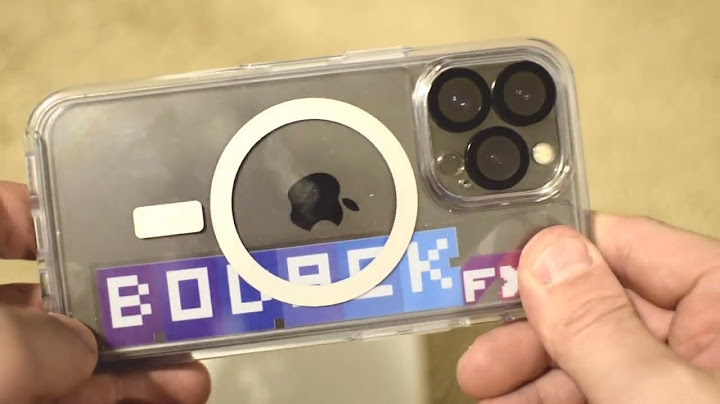If you are about to sell your Mac or are planning to give it away to someone, make sure you have taken all steps to securely erase all data on Mac and know how to properly reset a Mac before selling it. Read this simple guide that details how to clean all private data from a Mac and secure your privacy.Before you sell off your Mac or give it away to someone, it is important to follow some basic steps to ensure that your personal data that currently resides on the Mac does not fall into the wrong hands. You may think that you have deleted sensitive files and emptied the Trash can on your macOS hard drive, but the reality is that there are tons of places where your Mac stores important and sensitive information about you and your data. When you want to sell or give away any Mac, you must understand how to completely reset a Mac. Show
Step I — Take a BackupIdeally, you should be taking regular backups of your Mac irrespective of whether you are selling your Mac or not. Our data is very valuable, and any data loss could prove disastrous in most cases. But if you are the adventurous kind and keep testing your luck, we highly recommend taking a backup of your Mac before you sell it. Knowing how to take a full backup of a Mac is critical in ensuring that you can recover any important file in the future. There are several different ways in which you can take a backup of a Mac, but these are some of the methods of backing up a Mac that we recommend. Backup Method 1 — Time MachineTime Machine backups are the simplest and quickest way to back up your Mac. Apple bundles the Time Machine utility by default in macOS, so as long as you have any external hard drive that is greater than or equal to in capacity to your Mac, you can be up and running with a Time Machine backup in no time. Backup Method 2 — Bootable BackupsAlthough Time Machine is a great way to backup your Mac, it does not create a Bootable backup of a Mac. So if your Mac fails to boot, you’ll have to first reinstall macOS and then restore the Time Machine backup, which takes up a lot of time. To get around this, we recommend creating Bootable Backups of your Mac using apps like SuperDuper! or Carbon Copy Cloner. Backup Method 3 — Cloud BackupNo matter how many local backups you take, using Time Machine or third-party apps, you still stand the risk of losing these backups in case of physical damage to the drive. In such cases, where your data is important enough that you seek data redundancy, we recommend Cloud Backup solutions like Backblaze. Services like Backblaze backup your computer to the cloud, so you can access your backups from anywhere and restore them whenever you want. Step II — Sign Out of iCloud, iTunes, and Other AccountsBefore selling off your Mac, you must sign out of any iTunes and iCloud accounts that you are currently logged in with. This includes services like the Mac App Store, iTunes Store, Apple Music, iCloud Photos, Mail, Calendar, iMessages, and on newer versions of macOS Catalina, also includes Apple TV+, Apple Arcade, etc. Make sure that you sign out of each of these services before you format your Mac. One place that is fairly obvious but one that is missed by several people is at System Preferences → Internet Accounts. Ensure that you are signed out of all the accounts listed here. Step III — Format Your Macintosh HD using macOS Recovery ModeSimple reinstalling macOS on your Mac before selling it is not enough. All that does is reinstall the System files and gives you a fresh copy of the OS, and in most cases (depending on the options chosen by you), leaves user files untouched. To clear all personal data from a Mac before selling it, you must first reformat the Mac using macOS Recovery Mode and then install a copy of the latest version of macOS. Here’s a simple guide that explains how to format the Macintosh HD using macOS Recovery Mode.
Step IV — Do a Clean Installation of macOSAfter you have erased and formatted your internal drive in Step III, let us now take a look at how to do a clean install of macOS on a Mac before selling it. Before we proceed with the steps below, ensure that:
Now, let’s see how to do a clean install of macOS:
Since you are selling your Mac or giving it away to someone, it’s best to let them go through the setup process after a clean installation of macOS, so that they can choose their own Administrator username, passwords, and other details. Once you have followed these four steps details here, your Mac is ready to be sold off. |

Related Posts
Advertising
LATEST NEWS
Advertising
Populer
Advertising
About

Copyright © 2024 chuyencu Inc.
















